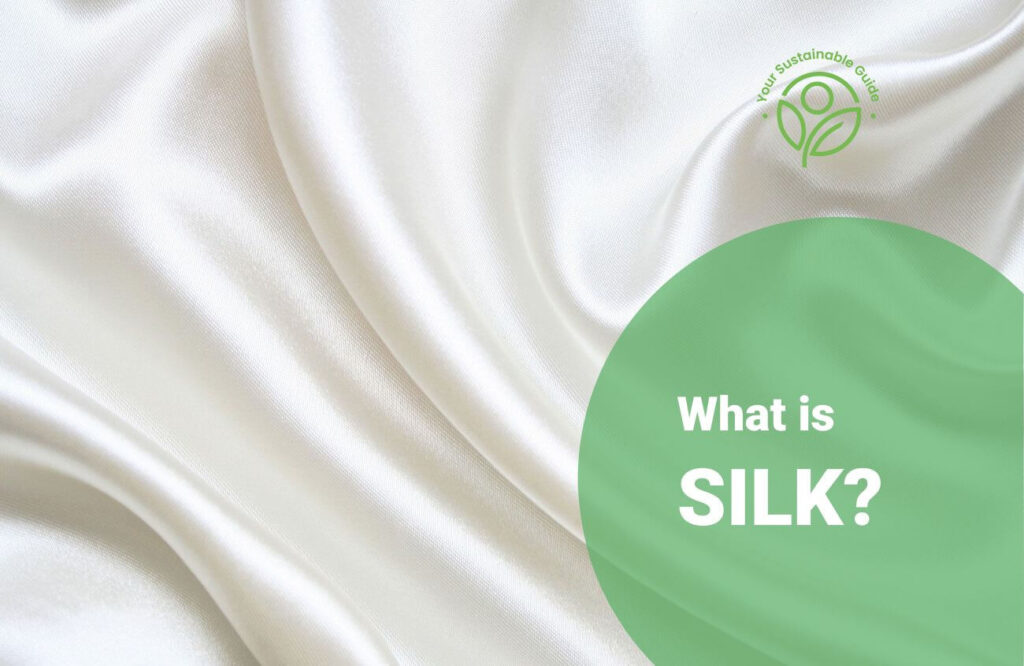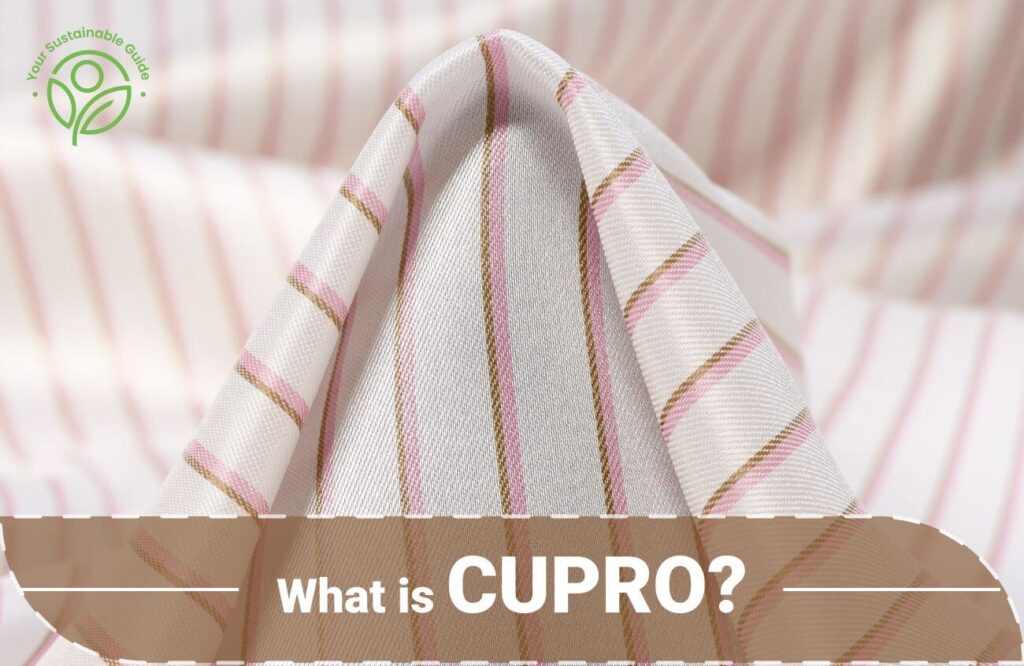The touch and feel of silk against your skin can’t be compared with any other fabric that exists to date, be it sleeping like a baby on luxurious silk sheets or flaunting your favorite silk scarf. No one can get enough of this exotic and indulgent fabric. Being one of the most ancient fabrics, silk has been so timelessly elegant and loved that it soon became an adjective. Fascinating, right?
Made from the cocoons of Bombyx mori silkworms, Silk is crowned as the ‘Queen of Fabrics’ and is used to produce a variety of textiles, including indoor and outdoor wear, home furnishings, etc. Bombyx mori, more commonly known as Mulberry silk, represents about 90% of the silk industry. So yes! Everything about this fabric screams comfort, luxury, and beauty, but did you ever wonder just how sustainable and ethical silk really is? Let’s unravel this fabric of royalty together.
What is Silk?
Silk is made from the cocoons of a domesticated caterpillar species known as the Bombyx mori, which lives on mulberry trees; hence it is popularly known as Mulberry silk. Although other insects too produce silk-like materials, larvae of the Bombyx mori remain to produce a significant part of the world’s silk.
Known to be the strongest and one of the oldest natural fabrics in the world, silk has been prized for its softness and luster throughout history. As a result, legendary silk trade routes were built to spread this fabric far and wide, transforming cultures throughout ancient times. The Silk Road also known as The Silk Route, i.e. trade routes from China through Central Asia, the Middle East, and Europe have been influenced by this luxurious and delicate fabric for more than a millennium. Until synthetic fibers emerged around the early 20th century, Silk had been the go-to fabric for a wide range of fashionable items like stockings, laces, ribbons, etc. Undoubtedly, silk remains to be the world’s most luxurious fabric with a beautiful luster and soft, gentle touch.
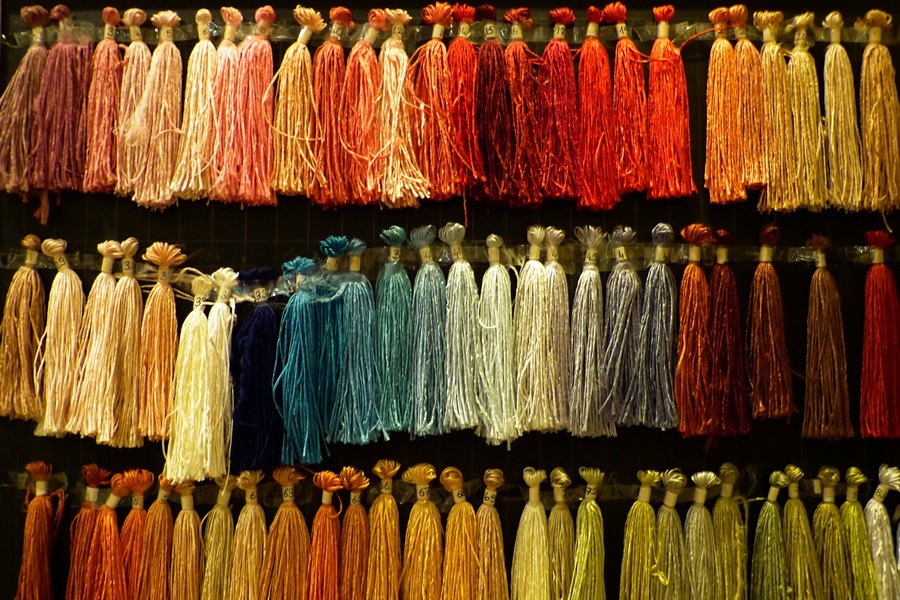
Domestication of silkworms and cultivation of silk first originated in China. Historical evidence proves that silk textiles were first used in China between 5000 to 3000 BC. According to Chinese legends, Empress Xi Lingshi was the first to discover that silk can be made from silkworm cocoons, which then led to the development of silk manufacturing or sericulture.
During ancient times in China, silk was reserved only for the royalty and nobility, but as Chinese civilization flourished and became wealthier, this durable and luxurious fabric was used even by the commoners.
Eventually, China’s silk production led to the development of pre-industrial trade routes known as the Silk Trade Route or The Silk Road. This route stretched from China to Central Asia, the Middle East, and Western Europe, and Chinese merchants frequently traveled through this road to exchange silk for other valuable commodities found in distant nations.
Since Roman times, silk was highly prized by Westerners, but this rich fabric’s popularity expanded during the Medieval period leading to widespread silk production throughout Europe by the 11th century AD. Italian cities, such as Florence, Lucca, and Venice, were economically dependent on silk production during the Middle Ages, and the silk industry gradually expanded to France and Spain.
At present, China remains to be the world’s most prominent producer and exporter of silk with its production and supply of 146,000 metric tonnes of silk annually, followed by India which produces about 28,708 metric tonnes of silk per year.
How is Silk Fabric Made?
Sericulture or Silk production starts with growing and harvesting silkworm cocoons on mulberry trees. Once the cocoons are gathered, they are exposed to high heat in order to stop the mature worms from emerging, as this causes a hole in the cocoon, which damages the silk fibers.
After the cocoons are heated, silk workers carefully untangle the threads by briefly boiling them in order to remove a small amount of sericin present in the cocoons. Sericin is a glue-like substance excreted by the silkworms to form their metamorphosis (transformation) chambers.
Cocoons are meticulously made by silkworms out of a single long strand of fiber, meaning a fully untangled cocoon will result in one string of raw silk fiber. This process involves brushing the cocoon (manually or with an automated machine) until the loose end is found and loading it through a porcelain eyelet to a reel that unwinds the silk strand.
Once the silk strand gets loaded onto a reel, it automatically gets attached to another strand resulting in a continuous silk string. The sericin found naturally in silk strands helps the fibers to stick together. Next, these long silk strings are twisted together to make yarn.
After the silk yarn is spun, various post-production processes can be performed to achieve specific desired attributes. Finally, the silk yarn is run through a roller to transform it into a more uniform state, making the yarn ready to be woven into various textile products.
Most silk manufacturers dye their yarn and sometimes even bleach them before weaving them into textiles. Sometimes silk producers also stiffen or steam silk to attain certain attributes in the fabric.
Is Silk Sustainable?
Yes, silk is sustainable. Since silk is a completely natural fiber, it is biodegradable in nature and undoubtedly more sustainable than synthetic fabrics.
Silk production is considered as a sustainable textile industry because silkworms live on mulberry trees and these trees are easy to grow without the need for pesticides or heavy fertilizers. Therefore, silk is cultivated without releasing toxic chemicals into the environment.
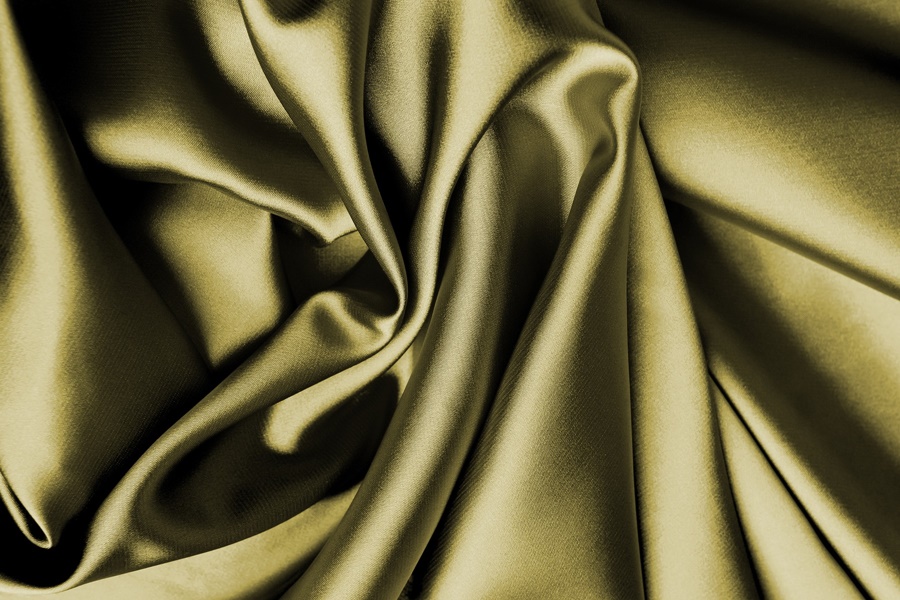
However, mulberry trees are thirsty and consume large volumes of water, along with that the whole process of growing and transforming cocoon into silk involves water usage at different stages. But compared to other fabrics, this fault can be overlooked because no fabric, natural or man-made can be fully chaste.
On the other hand, silk is not produced in most parts of the world but remains to be highly desired in foreign lands, so while the harvesting and production of silk have a minimal environmental impact, transporting it around the world does harm the environment because of the heavy usage of fossil fuels involved in shipping. Apart from these concerns, there are not much environmental harms involved in silk production, making it one of the most sustainable fabrics.
Is Silk Ethical?
Silk is ethical in terms of providing employment and a source of livelihood to rural populations. The silk industry of China and India majorly employs millions of underprivileged workers. Therefore, sericulture is an excellent way to uplift small independent businesses and cottage industries (small groups of people working in their homes or at nearby workshops) in rural areas of these countries and help them with a steady income along with keeping this beautiful fabric alive.
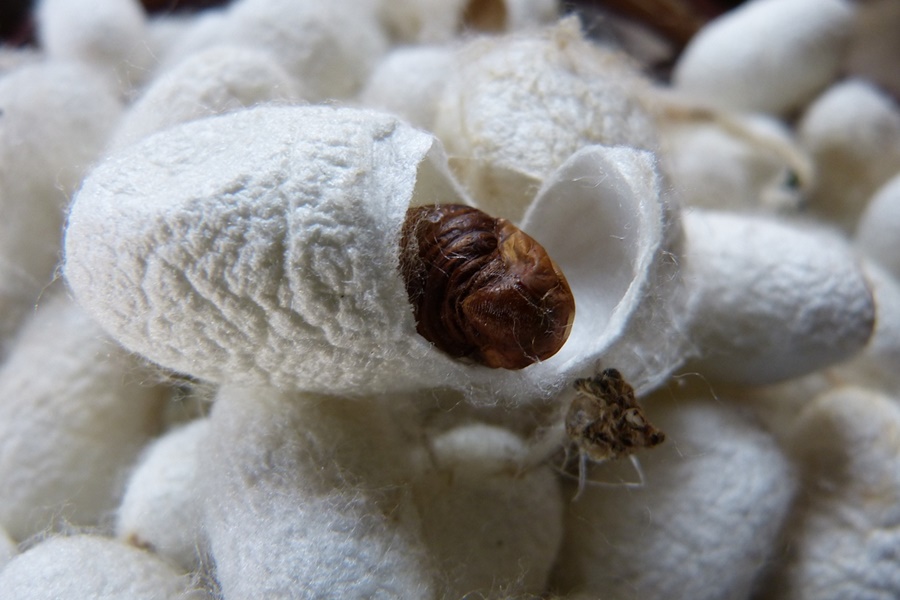
However, it can’t be denied that silk production involves mass killings of innocent living beings. In addition, the 2003 Human Rights Watch reports have shown exploitation and child abuse in the silk industry of India, where some 350,000 children were found working as bound laborers, boiling cocoons, embroidering saris, etc., in unsafe working conditions. These factors does make silk unethical.
Is Silk Cruelty-free?
No, silk is not cruelty-free. In nature, the Bombyx mori or mulberry silkworms go through the same steps of metamorphosis just like any other wild moth. A silkworm, ready to emerge from its cocoon as a full-grown moth, makes a small hole by secreting a fluid in its cocoon, creating a passage to escape. However, this step breaks the long silk strands that make up one whole cocoon.
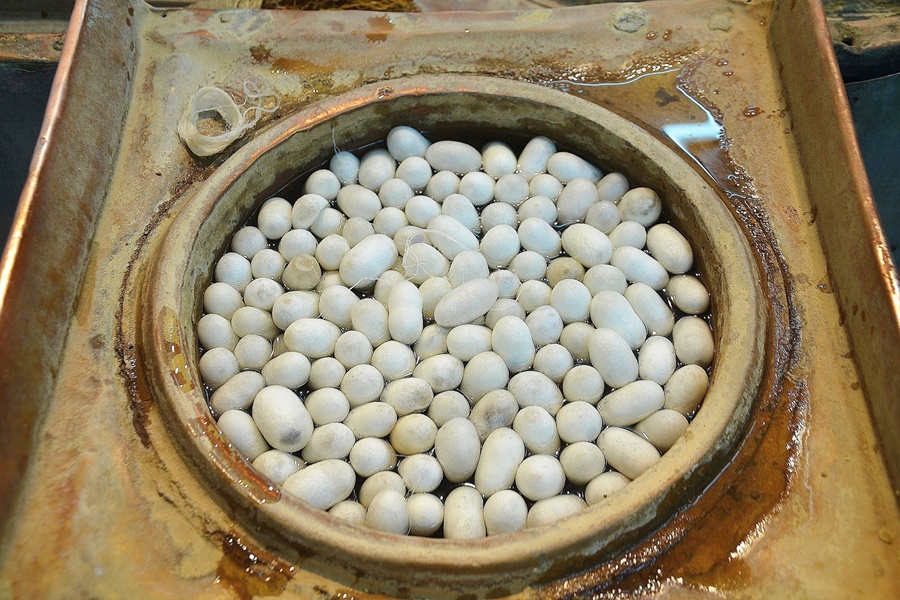
To avoid this damage silk makers usually boil the cocoon with the live worm still inside, to keep the long strands intact. Hence, in the silk industry, the moths never get to see daylight as they never live past the pupal stage. In addition, as a result of domestication, mulberry silkworms are born blind. They can neither fly nor mate without human assistance, limiting their ability to live beyond the cocoon stage.
As per PETA’s investigation, it takes about 3000 silkworms to be killed to get 1 pound of silk. That means trillions of these worms are killed annually for human benefit. So silk is definitely not cruelty-free or vegan.
Is Silk Affordable?
Silk is a luxury fabric known to be one of the most expensive natural fabrics in the world. The farming and harvesting of massive amounts of silkworm cocoons involve various steps of costly, resource-heavy, and labor-intensive processes. For example, to achieve just 1 kilogram of silk, some 6500 silkworms are required.
EmergingTextiles.com is a site that releases reports about current silk prices in China. Currently, Chinese-origin silk is ranged between $50 and $60 per kilogram. The Government of India also keeps track of silk prices produced in this nation.
Silk Certifications
When shopping for silk or any other sustainable materials, it’s vital to check for certifications and standards from recognized third-party organizations that authenticate the quality of the fabric. Below are some certifications that you can look for while purchasing your next silk piece.
- Global Organic Textile Standard (GOTS).
- Silk Mark for Indian textiles.
Properties of Silk
- Silk is an all-natural fabric making it biodegradable in nature.
- It is known to be the strongest natural fiber.
- Silk has high breathability making it extremely comfortable.
- It is a lightweight fabric that is exceptionally soft and smooth.
- Silk has a luster and shine which makes the fabric luxurious and rich.
- It has great moisture-wicking abilities.
- Silk has good thermal regulation properties that maintain body temperature because of which it can be worn in all seasons.
- It is a quick-drying fabric.
- Silk has good flexibility because of which it drapes well.
- It is hypoallergic.
- Silk responds to dyes well.
Pros & Cons of Silk
Pros of Silk:
- Silk is 100% biodegradable.
- Silk has a beautiful sheen and a very soft feel making it a rich fabric.
- It is exceptionally breathable and lightweight.
- Silk has good moisture absorbency abilities.
- It is heat resistant.
- Silk dries faster than most fabrics.
- It is a flexible fabric with an elasticity of up to 10-20%.
- Silk is naturally anti-allergic.
- It is wrinkle-resistant.
- Silk production has a low environmental impact.
Cons of Silk:
- Silk production involves animal cruelty.
- Silk has a static cling.
- Some silk pieces can be easily damaged and stained with water.
- Silk needs to be handled with care and it is suggested to always dry clean the fabric.
- Silk is a luxury fabric that is pretty expensive.
Uses of Silk
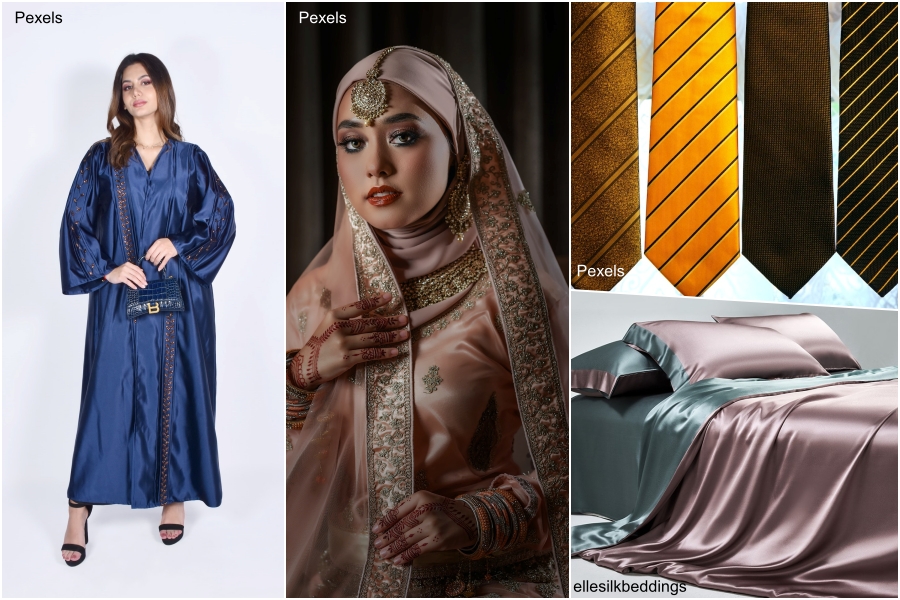
- Silk is a durable fabric with an incredible softness making it perfect to produce a wide range of apparel like blouses, dresses, shirts, scarves, evening wear, cocktail dresses, sarees, nightdresses, intimate wear, robes, wedding dresses, etc.
- Silk is also popularly used in making home textiles like bedsheets, pillowcases, duvets, tapestries, curtains, rugs, throws, cushion covers, etc.
- Among industrial purposes, silk is used in making parachutes, medical dressings, and surgical sutures.
Types of Silk
Mulberry Silk- About 90% of the world’s silk comprises of mulberry silk. Made by Bombyx mori or mulberry silkworm, it is the least expensive and most common of all silk types and is known for its extreme softness and strength.
Eri Silk- Eri silk is also known as ‘Peace silk’ because silkworms are not killed in obtaining this fiber. It is a heavier version of mulberry silk that is more durable. However, this silk is quite rare. Eri silkworms live on castor trees, because of which this silk is also called ‘Castor silk.’
Tassar Silk- After mulberry silk, tassar silk is the second-most produced silk fabric. Also known as ‘Wild silk,’ this textile is made from wild silkworms native to West Bengal, India.
Spider Silk- Spider silk is produced from the fluid secretion of spiders. It has high tensile strength but is extremely expensive because spiders can’t be bred like silkworms. For its exclusivity, spider silk is not used in textile production. It is only reserved for making bulletproof vests, telescopes, microscopes, and other niche products.
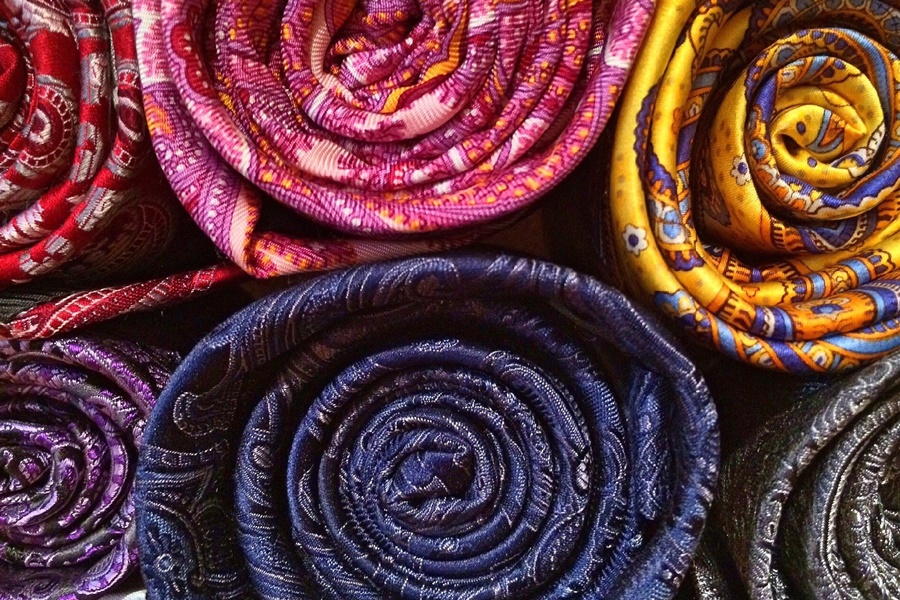
Muga Silk- Muga silk is native to the state of Assam, India. This luxurious silk variety is derived from muga silkworms which are semi-domesticated. Since this silk is only produced in Assam, it isn’t widely known in other parts of the world. Muga silk is a heritage of the Assamese people.
Sea Silk- Silk-like fibers produced in small quantities by a particular mussel species native to the Mediterranean Sea is known as ‘Sea silk’ or ‘Mussel silk.’ These mussels are domesticated by the people of Taranto, Italy, and are most valued in Italy and parts of Europe.
Coan Silk- Silk produced by a type of silkworm called ‘Pacypasa atus’ is known as Coan silk. This silk is native to certain parts of Greece, Turkey, and Italy. These silkworms feed on juniper, pine, and oak trees. The production of coan silk is pretty limited these days because of which it is mainly used as a blended fabric to strengthen other silk fibers.
Popular Forms of Silk
- Chiffon is a very light and translucent variety of silk used in various womenswear. It needs to be handled with gentle care.
- Crêpe de chine is another silk variety with a slightly rough touch. It’s less shiny than most silk types, so if the sheen isn’t your thing, you can blindly opt for this silk fabric.
- Dupion is a lustrous, dense, and heavier type of silk fabric. It is mainly used for formal wear. Usually, it is woven with multiple-colored threads creating an iridescent effect. So if you happen to own a silk jacket or dress that looks blue from some angles and green from others, undoubtedly that might be a dupion piece.
- Habutai is a silk weave native to Japan. It is primarily used in linings.
- Organza is a sheer and airy fabric, that is quite popular in making elegant womenswear.
- Charmeuse is a type of satin fabric woven in a specific way to achieve a striking sheen. It is exceptionally soft, flowy, and easy to move in.
- Taffeta is a more structured type of silk that can hold its shape better. Hence, it is widely used in making ballgowns, partywear suits, wedding dresses, etc.
- Velvet is a silk variety that is made by blending silk with rayon. It is very soft, durable, piles easily, and makes for perfect winterwear evening dresses.
Some other forms of silk are Chanderi, Shantung, Brocade, Paper silk, Jacquard, Italian silk, etc.
How to Identify Genuine Silk
- Touch-test silk by rubbing your hands against it. If you feel warmth then it’s genuine silk.
- If you’re planning to buy a lightweight silk variety, do a ring test by pulling the silk piece through a ring. Silk is flexible and smooth so if it is the real deal, it will easily pass through the ring and not scrunch up as artificial silk does.
- Generally, pure silks are expensive, so if you come across sellers promising cheap rates for silk, it might be a fake one.
- Silk is known for its luster and pure silk clothing is renowned for its dual-colored effect when held at different angles. A silk piece that only emits a white sheen, no matter the lighting angle, might as well be an artificial one.
- Do a flame test by burning the edge of a silk piece. When silk comes in contact with fire, the flame remains invisible and it smells like burning hair. However, in case of burning artificial silk, a smell similar to burning plastic will be emitted.
How to Care for Silk
- Always read the wash and care instructions on your clothing and bedding label.
- Try always to dry-clean your silks to avoid any mishaps.
- As per your clothing/bedding instructions, if your silk garments can be cleaned at home, then make sure to wash them in a silk-specific laundry detergent.
- Never wring your silks as that may break the silk fibers, and the garment may lose its qualities. Although silk is a strong fabric, its fibers weaken when they come in contact with water.
- Never use bleach in washing your silks, as that may damage the cloth’s natural fibers.
- Never dry silks under direct sunlight because silks are vulnerable to sun rays, and your favorite outfit or bedsheet might fade out.
Famous Brands That Use Silk
- The Ethical Silk Company
- Ayten Gasson
- Indiebride
- HERTH
- LANIUS
- Seek Collective
- All the Wild Roses
- Mother of Pearl
Best Alternatives to Silk
Ahimsa silk or Peace silk- Ahimsa silk, more commonly known as Peace silk are varieties of cruelty-free silk that is produced without harming or killing wild silkworms. In producing this silk, the full-grown wild moths are allowed to leave their cocoons naturally after which the left-out chrysalises are boiled down. ‘Eri silk’ and ‘Tassar silk’ fall under the umbrella of Ahimsa silk.
Cotton Sateen- Cotton sateen is made from high-quality cotton in a specific type of satin weave pattern, giving this fabric a pleasant and luxurious shine. It falls under the umbrella of cotton fabrics and is quite durable, has a smooth feel, and is exceptionally comfortable to use. Plus, it is cruelty-free and vegan.
Art silk- Art silk is an artificial type of silk that has the look of silk but is completely synthetic in nature and hence a lot cheaper than genuine silk products.Art silk is made from cellulose fibers like rayon or bamboo viscose and is also called ‘Bamboo silk’. This silk is also lightweight, durable, and has a silky shine.
Fun Trivia
- The Silk Route – Ancient trading route for silk from China to Central Asia, the Middle-east and parts of Europe.
- Games including Silk- Spiritfarer.
- Poems on Silk- Silk, Silken dreams, Cloaked Silhouette, Moonlight, Spider’s silk, Solace, etc.
Conclusion
Silk is a gorgeous fabric that has been used as a sign of luxury and royalty for ages. It is durable and one of the strongest natural fibers, so if handled with care silks lasts for a lifetime. However, the cruelty that goes behind silk production can’t be left unseen. Billions and trillions of silkworms killed every year for human use is as unkind as anything can ever be.
Nevertheless, apart from some of the most innovative sustainable fabrics, you can still indulge in silk by checking out for certified sustainable and ethical silks or cruelty-free silk alternatives like Ahimsa silk, Cotton sateen, and other types of artificial silk for a guilt-free shopping.

